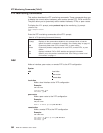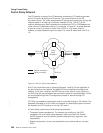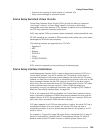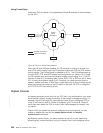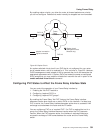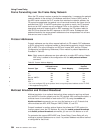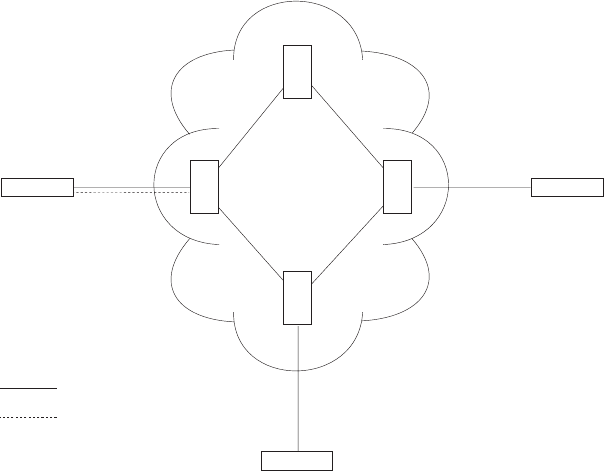
end-to-end PVC connection is not established. Router B receives an inactive status
for that PVC.
When the LMI and SVCsare disabled, the FR interface is running on a serial line
and a DTE cable is being used, the FR protocol asserts the DTR and RTS modem
control signals. (The Control signal is asserted for X.21). The FR interface goes up
once the DSR, CTS, and DCD modem control signals are on. (When X.21 is used,
the FR interface goes up once the Indication modem control signal is on.) The FR
interface is down or in the testing state if either DSR, CTS, or DCD are off or, when
X.21 is used, the Indication signal is off. Therefore, you need to ensure that the
modem, modem eliminator, or DSU that is used drops one or more of these signals
when the physical connection to the FR switch or the other FR DTE (if configured
for FR DTE to DTE connectivity) is lost.
Orphan Circuits
An orphan permanent virtual circuit is any PVC that is not configured for your router
but is learned indirectly through the actions of the network management entity. For
example, Figure 23 on page 391 assumes that router B has a configured PVC to
router D, but none to router A. Router A configures a PVC to router B. Router B
would then learn about the PVC to router A from LMI messages and classify it as
an orphan.
Orphan PVCs are treated the same as configured circuits except that you may
enable or disable their use with the enable orphan-circuit and disable
orphan-circuit commands.
By disabling orphan circuits, you add a measure of security to your network by
preventing any unauthorized entry into your network from a non-configured circuit.
DLCI 19
Router
B
Frame
Relay
Backbone
Router
D
Router
A
physical connection
logical connection
B
Figure 22. DLCIs in Frame Relay Network
Using Frame Relay
390
MRS V3.2 Software User’s Guide
|
|
|
|
|
|
|



